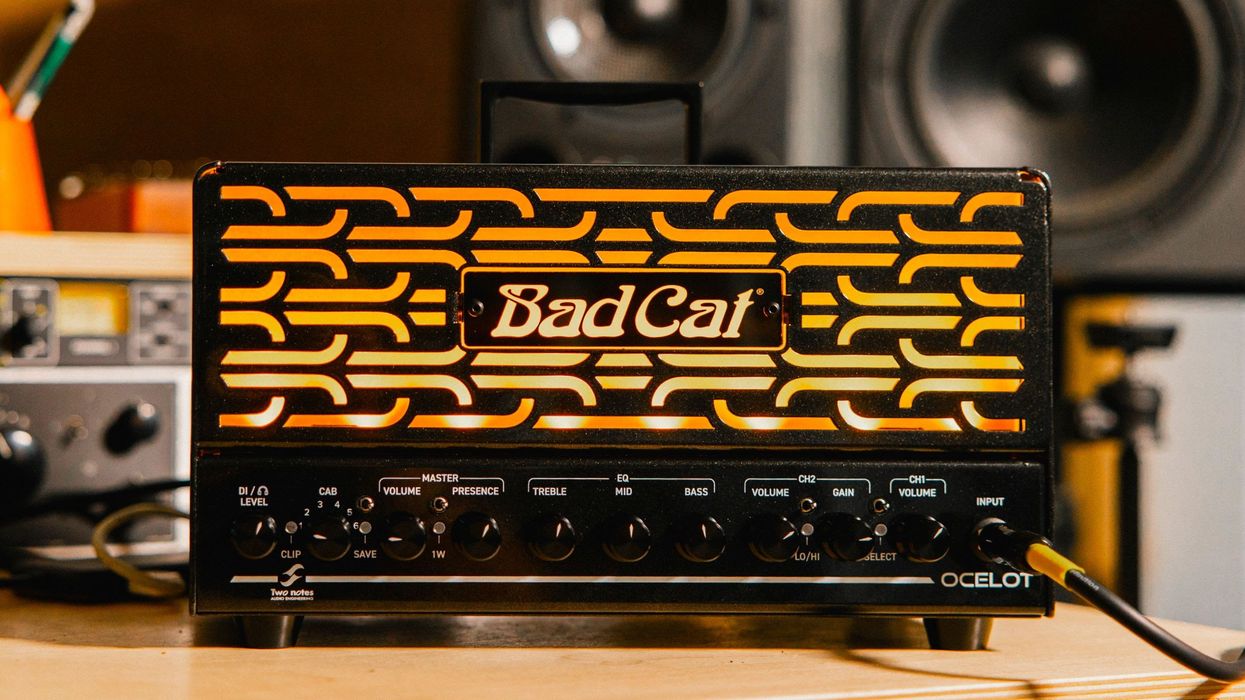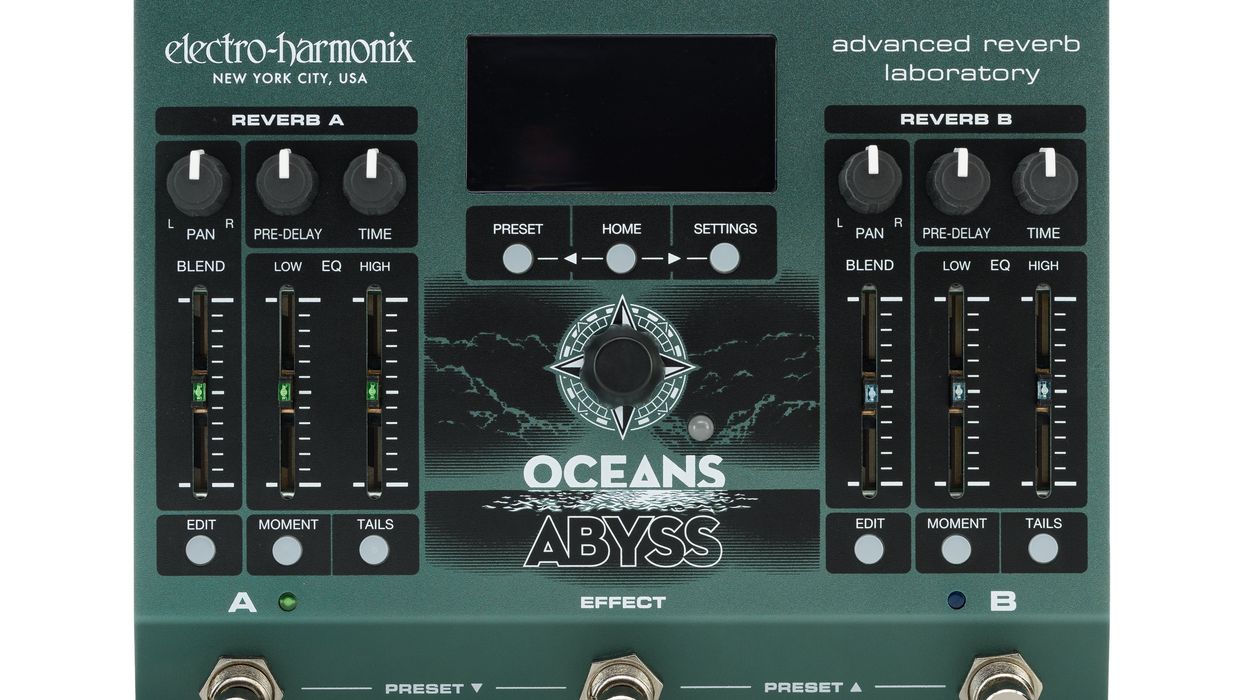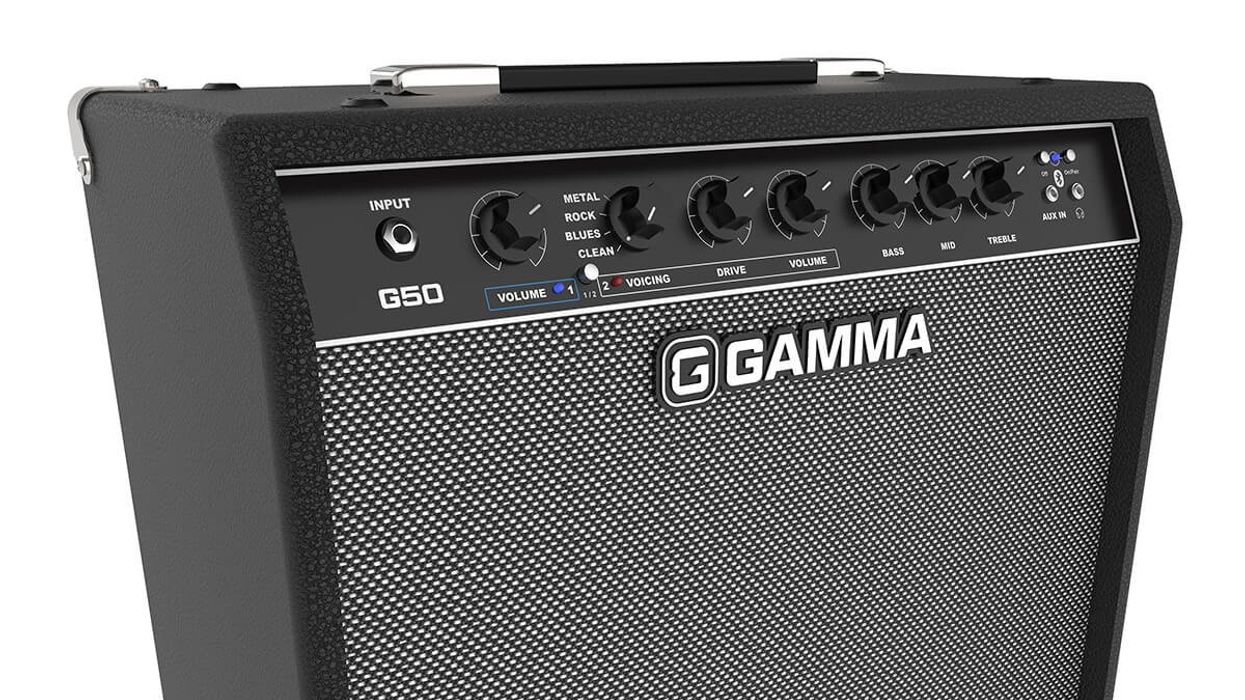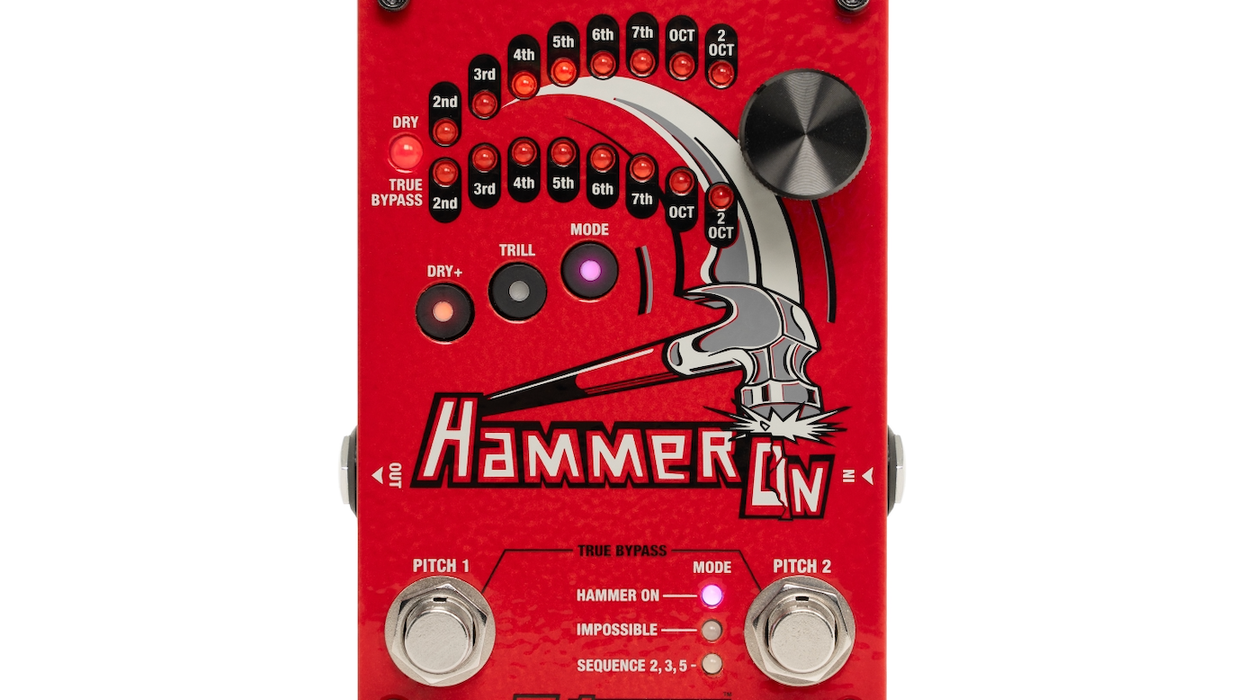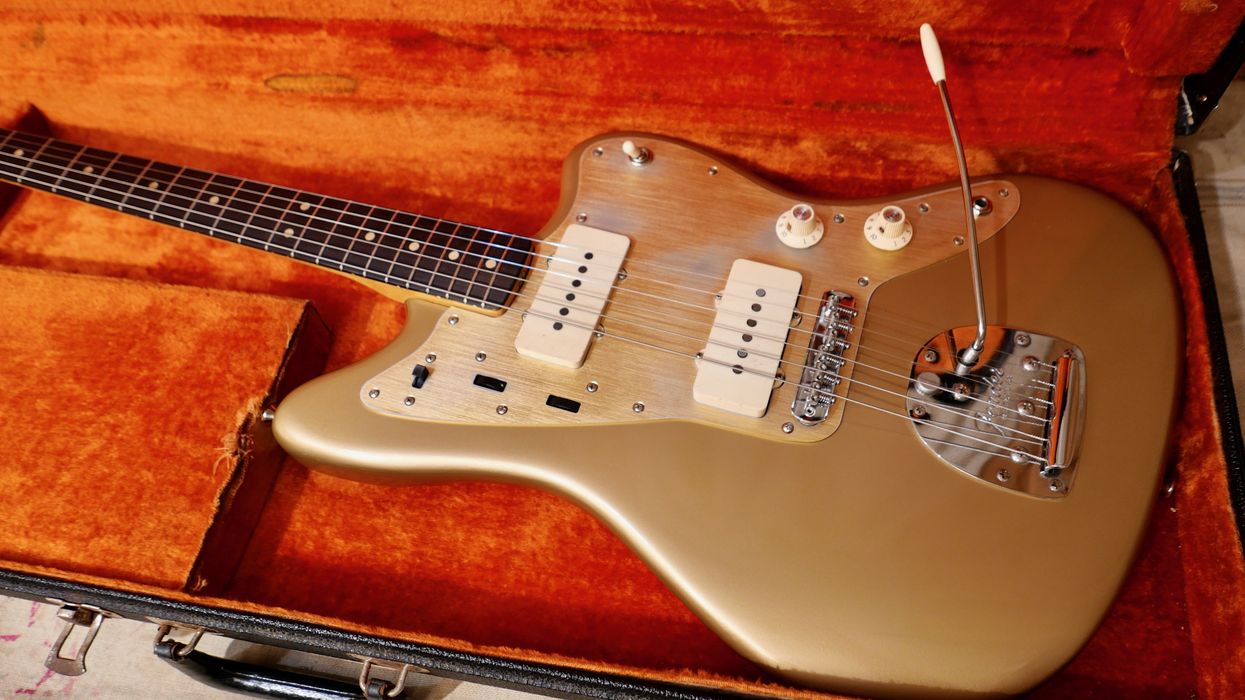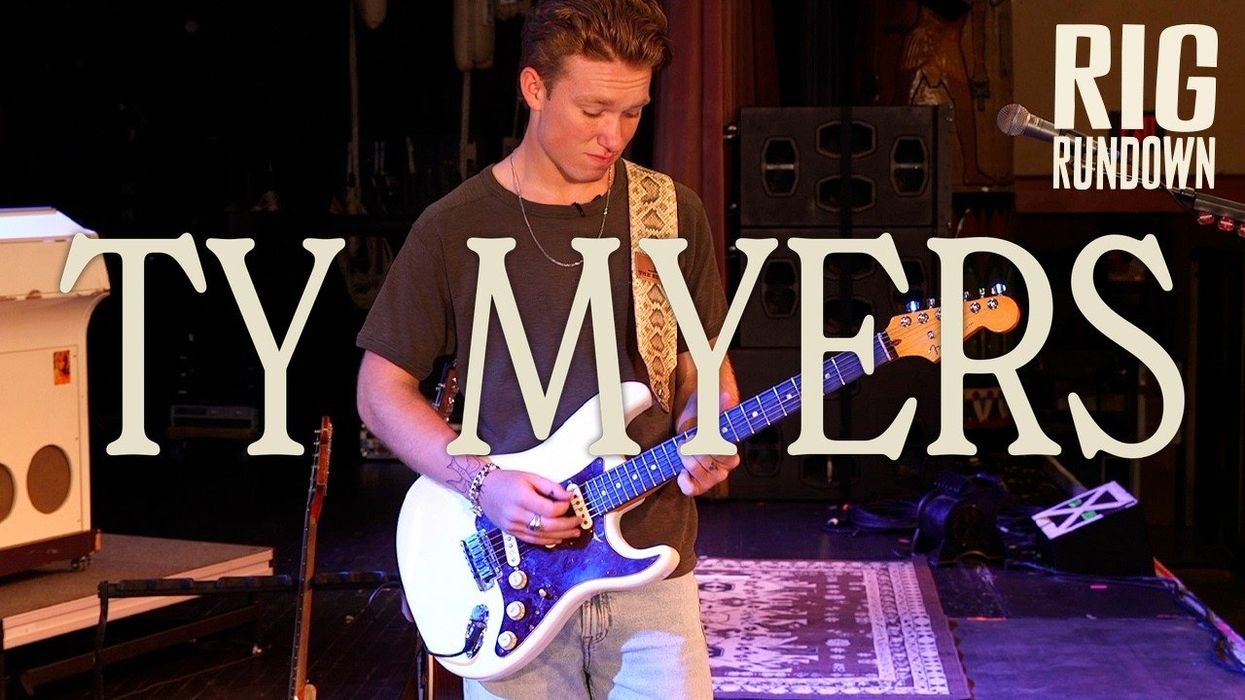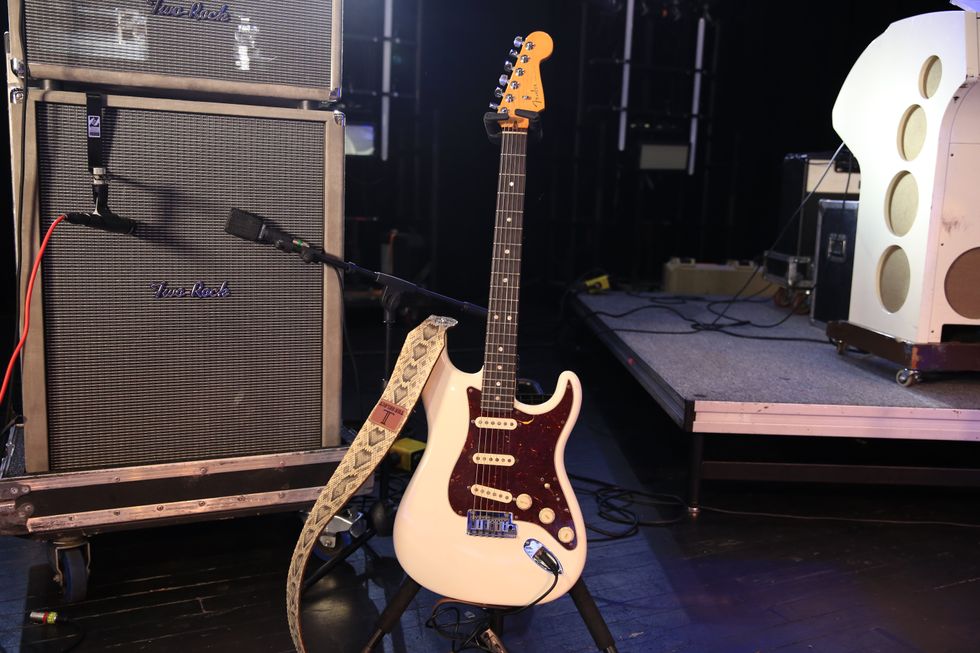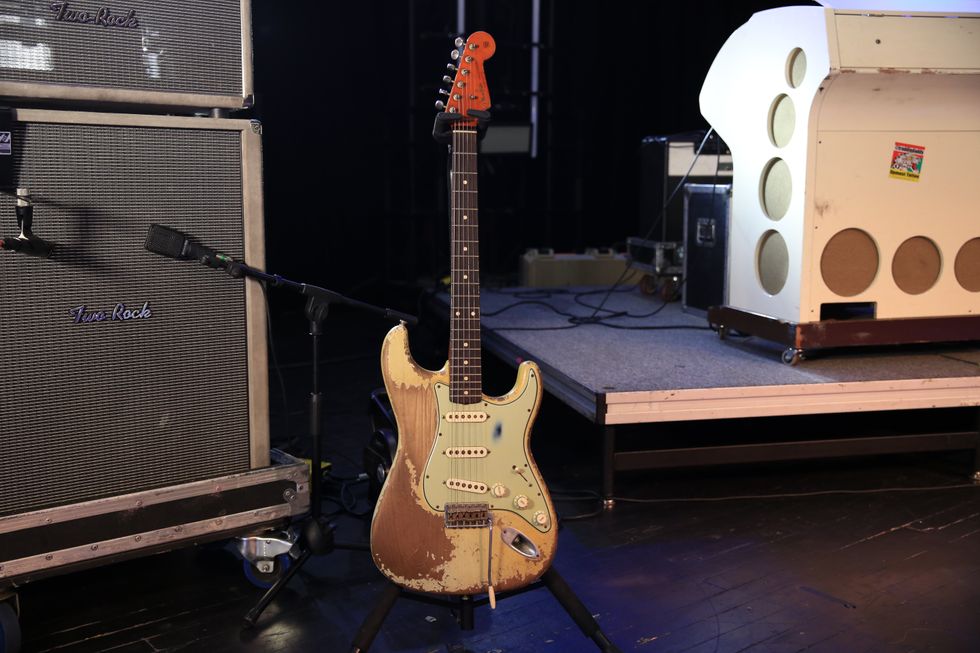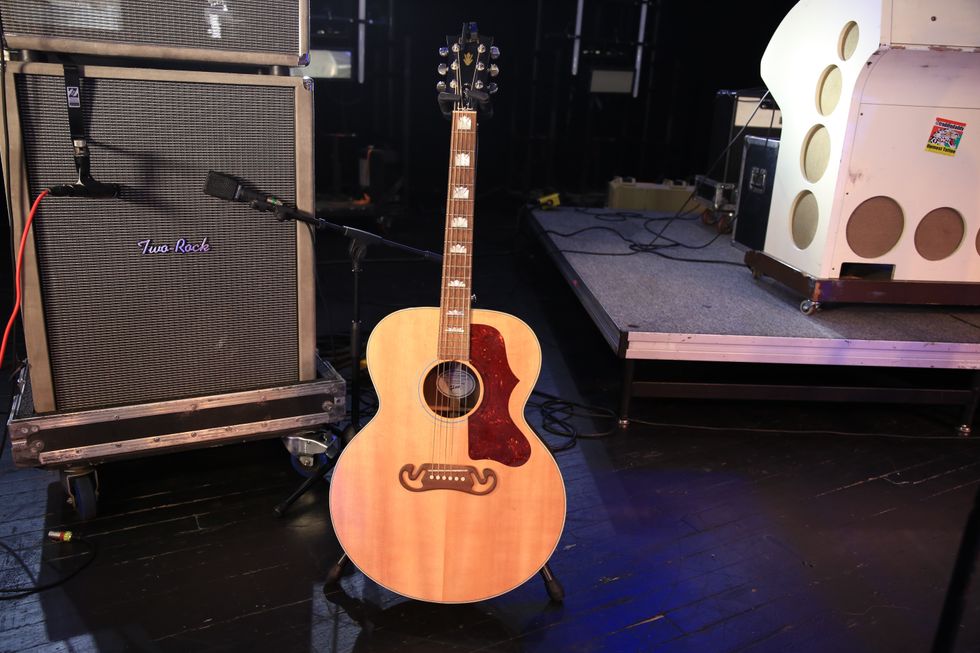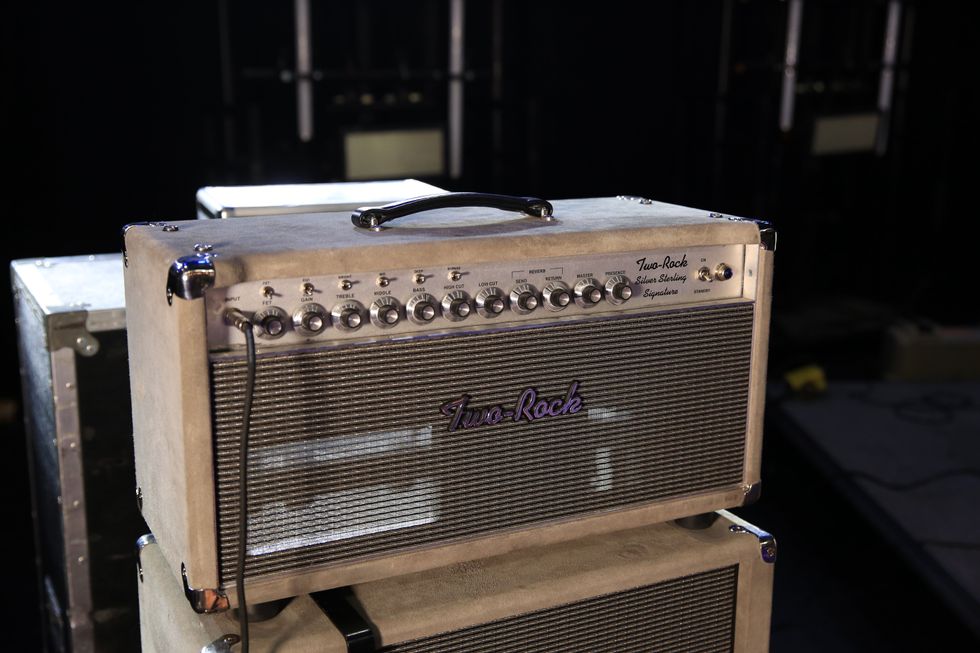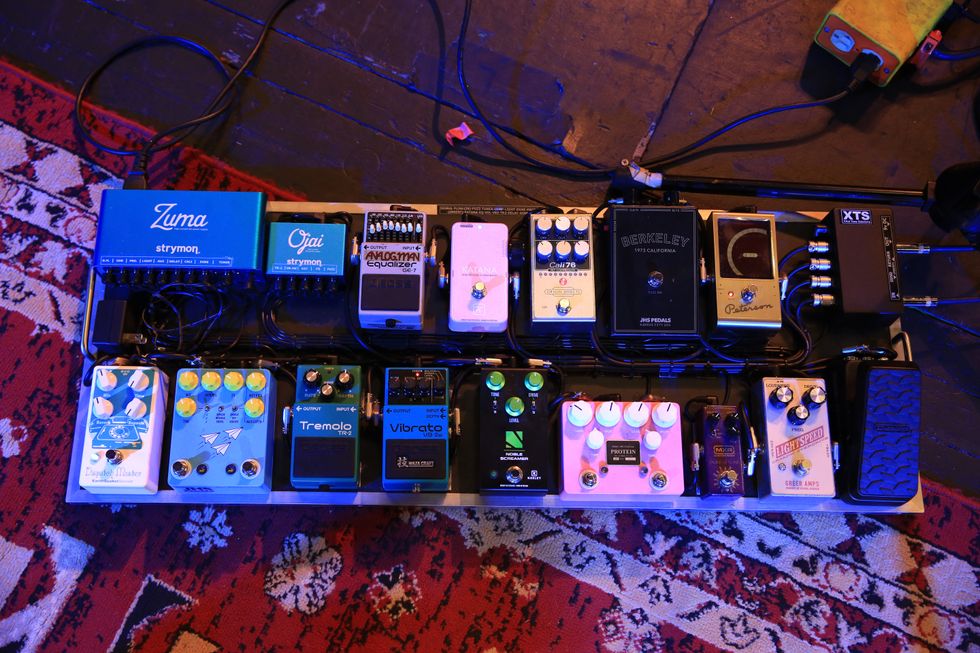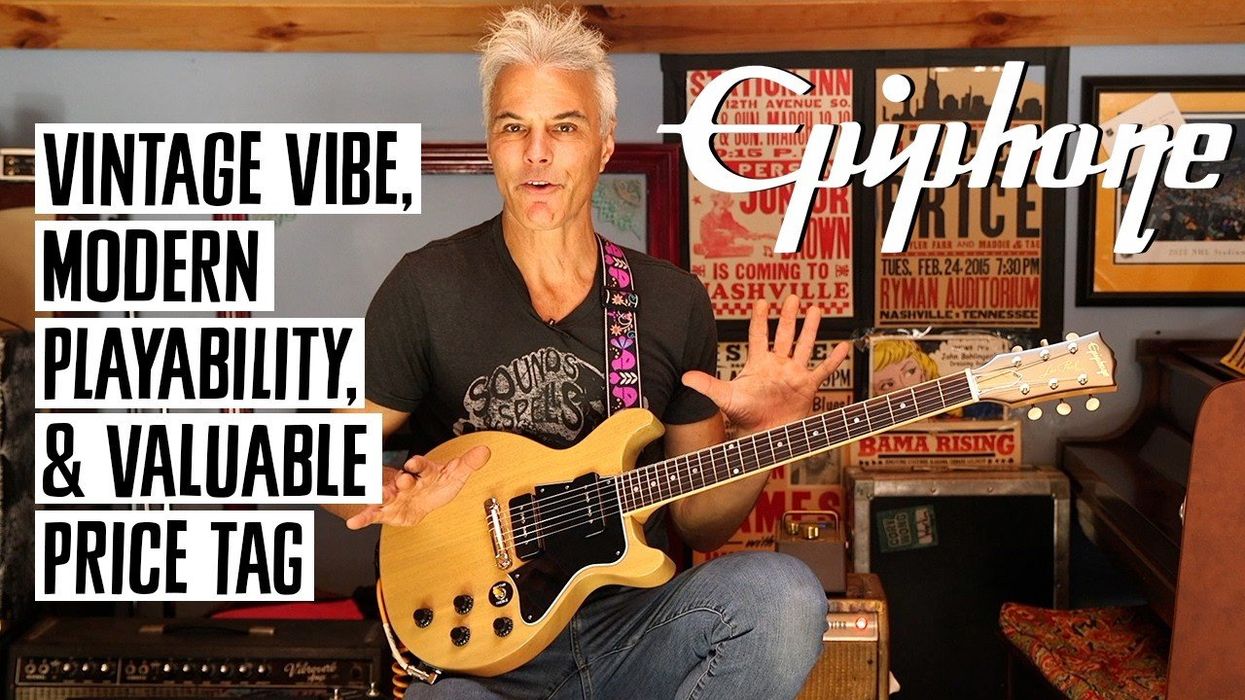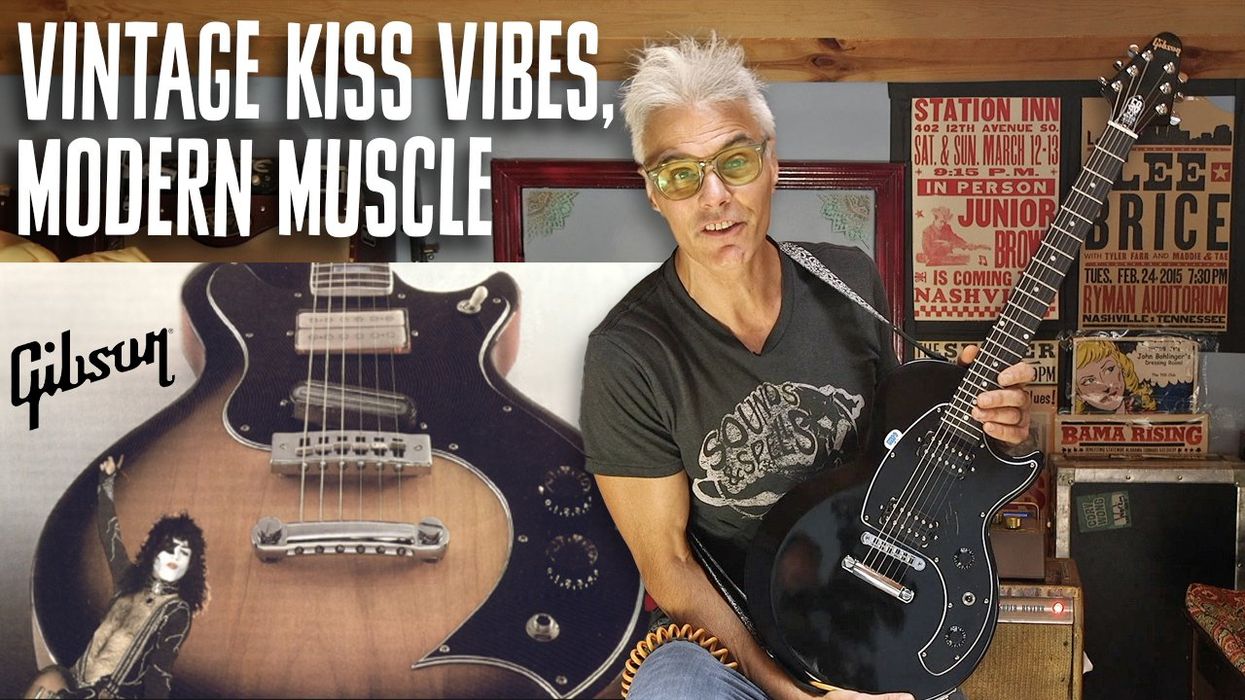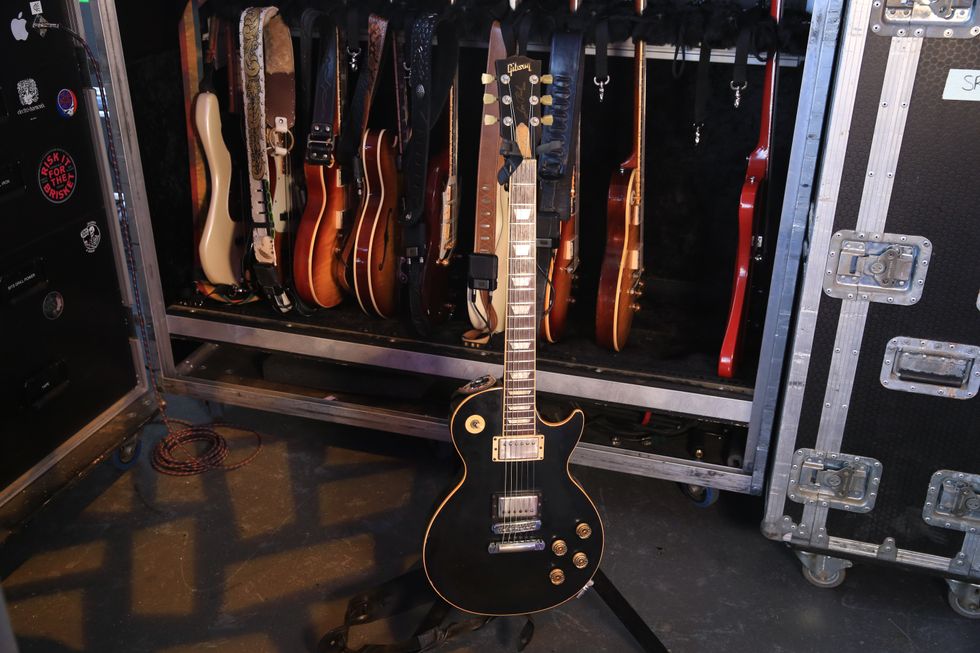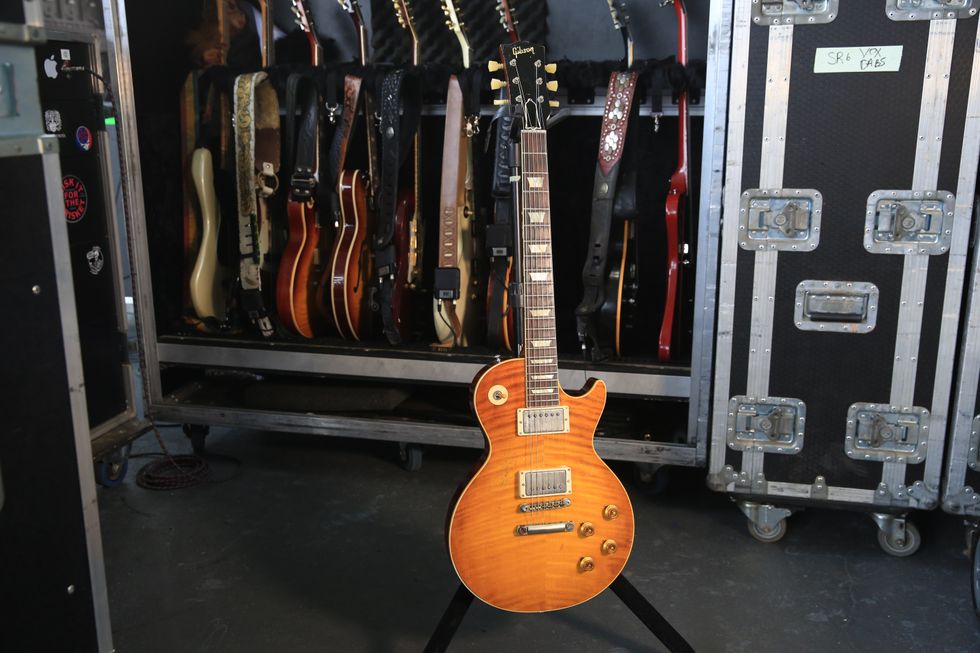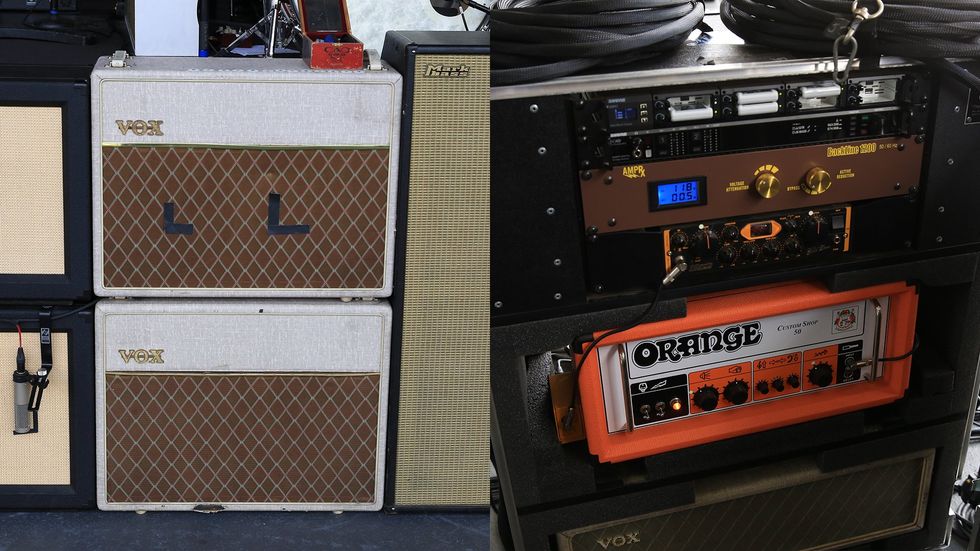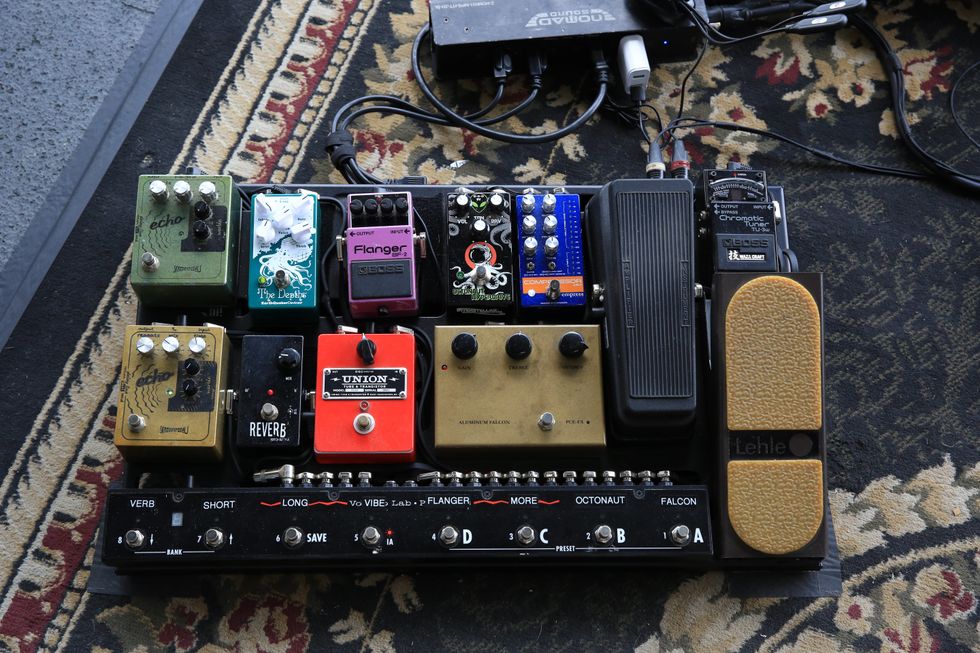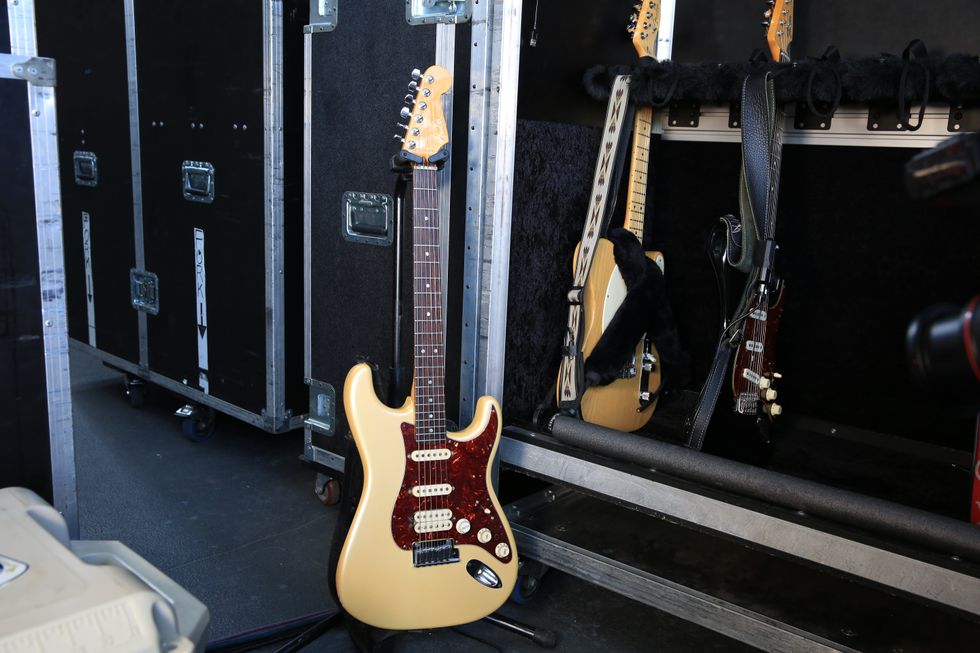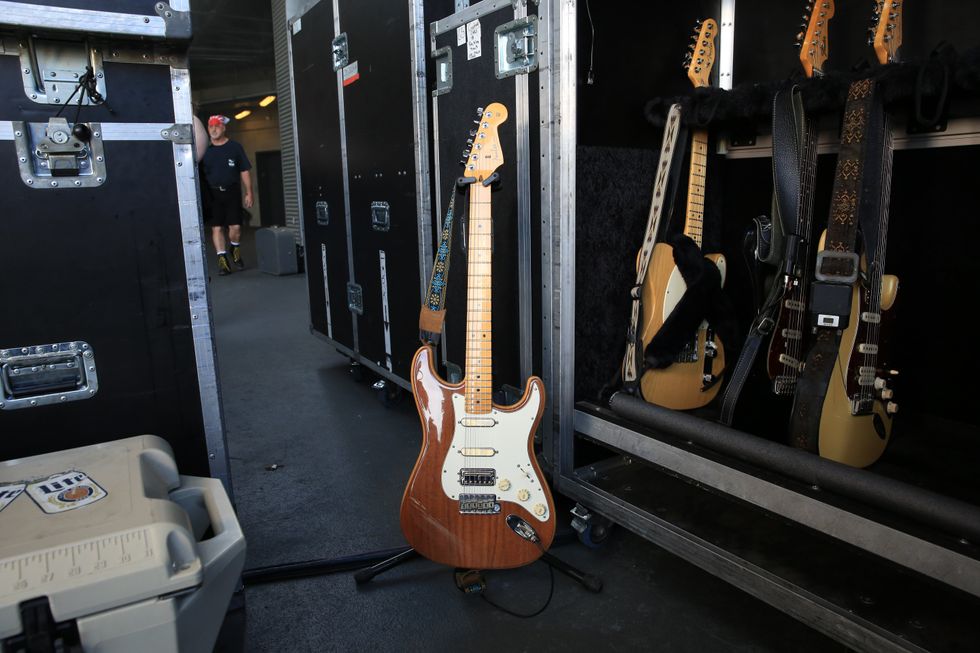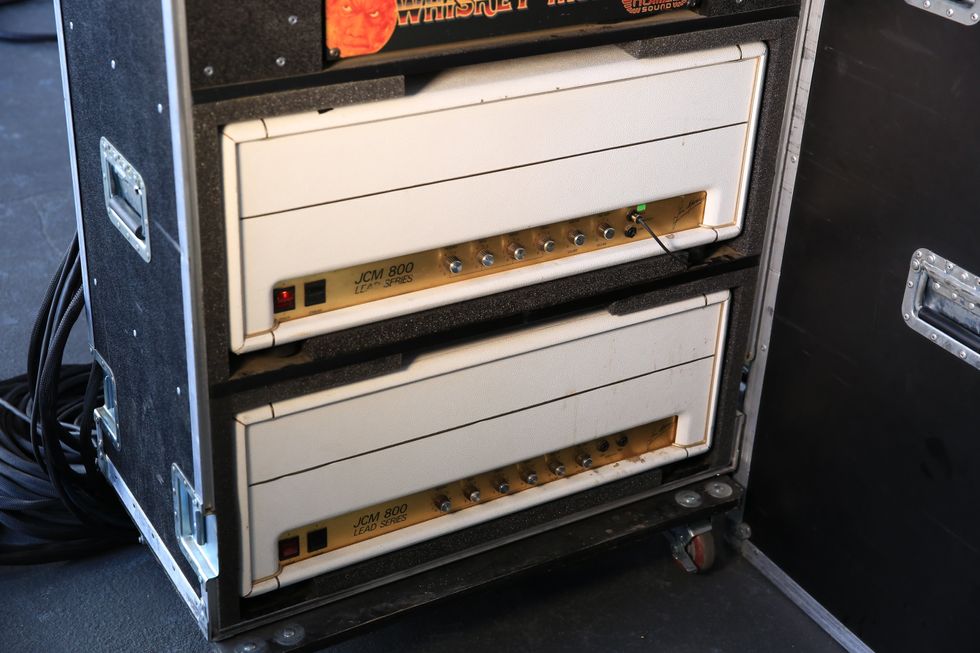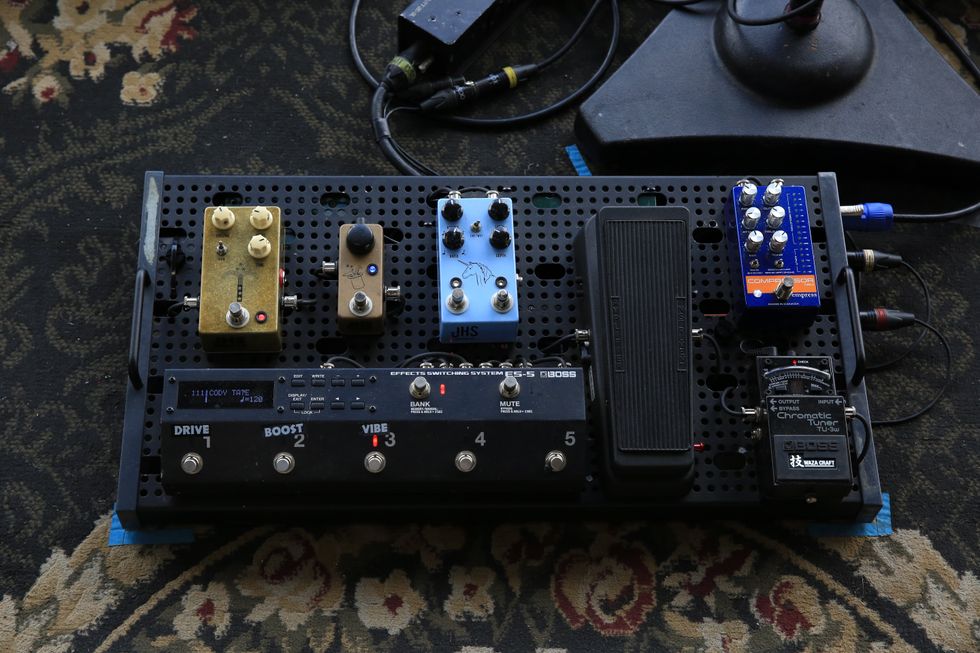| Download Example 1 Waveform 8, then 7. 1978 Gibson Les Paul Custom through a Fender Twin. | |
| Download Example 2 Waveform 6. Fender American Strat through a Fender Twin. | |
| Download Example 3 Waveform 3, rate switches slow/med/fast. 1978 Gibson Les Paul Custom through a Vox AC30 combo. |
Bursting At The Screws
The Empress Phaser, like so many of Empress’ effects, is positively laden with features. And the compact casing is bristling with switching and tone shaping options that make it an unusually versatile phaser.
Phaser devices normally operate on a single waveform, which determines how the phasing effect rises and falls. The Empress Phaser enables you to select eight waveforms with a single knob—each with their own unique quirks and reactions. The Blend knob adjusts the wet and dry mix of the overall signal, while the Speed/Ratio knob adjusts frequency through an exceptionally wide range. The pedal also features Width and Gain knobs, which control wave amplitude and output.
Just above the five control knobs there are five three-way switches that help you zero in on your ideal phase even further. The first of these dictates whether the pedal’s effect speed is governed by the Speed/Ratio knob, the convenient tap tempo footswitch (which enables manual input of a tempo and multiplication of rate using the Speed/Ratio knob) or the super-cool Auto mode, which I’ll explain more in detail a little bit later. The next switch, Speed Range, dictates the range of phasing rate controlled by the Speed/Ratio knob. Then there’s the Stages switch, which flips between a thin-sounding, two-pole stage setting, a unique three-pole stage setting, and finally a four-pole stage configuration that is pretty common in most single-knob phasing effects. A Resonance switch adds more feedback and low end response. And the last control determines which performance parameter is controlled by the optional expression pedal.
The Nitty Gritty
A plethora of options can sometimes make it difficult to accomplish simple tasks, but that certainly wasn’t my experience with this pedal. I started my investigation of the Empress by working with some example settings provided by Empress in the manual, and plugged in a 2008 Gibson Les Paul Studio with a Fender Twin Reverb Reissue. The first mode was a simple sine wave, a waveform that most people are used to hearing from phasers and most common modulation effects. The tone was smooth as silk and very full, though I had some minor issues with getting the right level on the Gain control, which was quite sensitive and increased output more than I expected (it’s capable of up to 6 dB of additional gain). Keeping it at around the 10 o’clock position helped keep the effect clean and pure, but anywhere higher than that started to add a little grit to the tone. Thankfully, it was a nice sounding overdrive, and was kind of cool to have when I wanted to dig into the strings for more Smashing Pumpkins or My Bloody Valentine-esque textures.
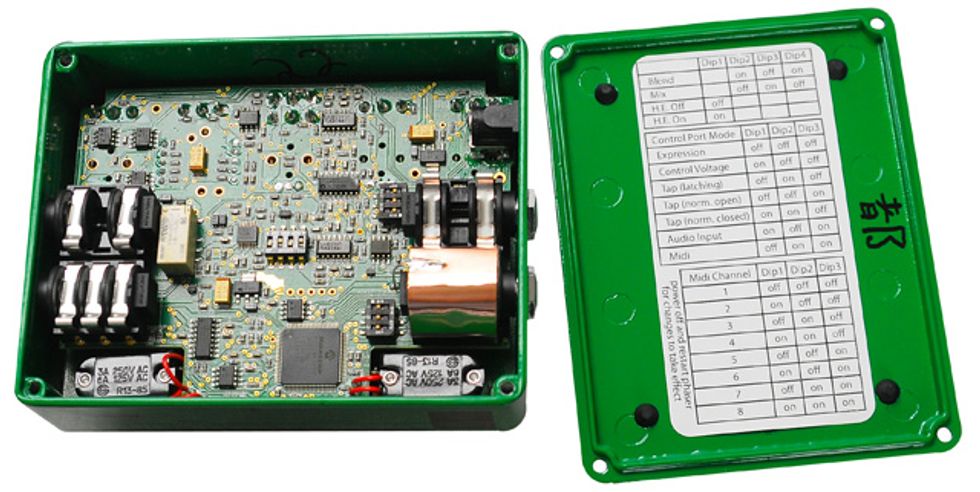
Range of Motion
Twisting the Mode knob clockwise allows you to select from a very expressive set of waveforms. Triangle, asymmetrical sine, swung sine, saw, reverse saw, square, and random waves ranged from subtle to radical depending on how you set the other control parameters.
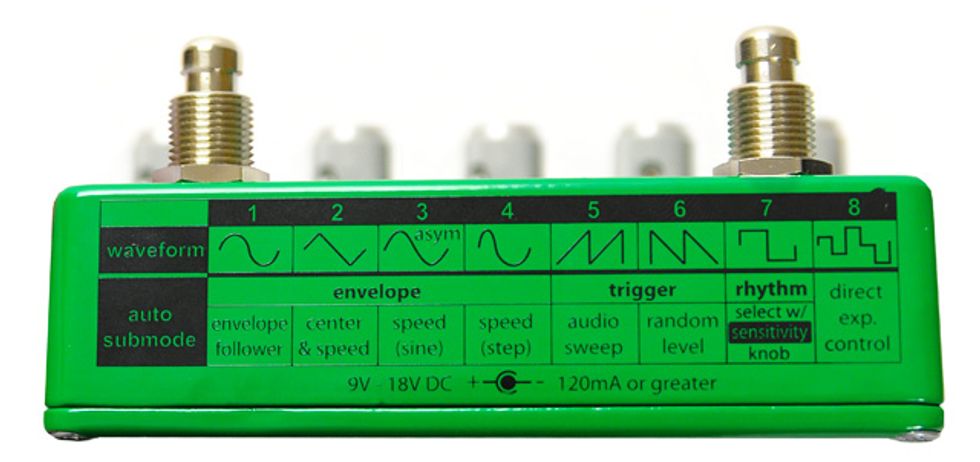
Each function demonstrated remarkable range and sound shaping potential—especially the Speed/Ratio knob. And I achieved some of my favorite, and most out-there sounds by flipping the Speed Range switch to Fast, and cranking the speed control to generate near-ring modulation tones. The Empress Phaser is capable of doing some great, conventional phasing effects, but the unique, space-age sounds that I was able to coax out of it made me much more enamored with the more extreme potential of this pedal.
The wild sounds weren’t just fun to play with, they were actually very musical, which is something that doesn’t occur very often with wild and wooly guitar effects. Mode 8 was a perfect example of this, in which the phaser was operating in a random step mode. Set up in this manner, the Empress became both a phaser and a sample and hold filter, capable of some of the coolest sounds this side of Adrian Belew.
Automatic for the Player
One of the most unique features on the Empress Phaser is the mode dubbed Auto, which effectively makes the pedal react to your playing. In Auto mode, the phasing effect would get more intense with heavier picking, and subtler with a lighter pick attack. This type of circuitry has been implemented in other effects before, but Empress designed their circuit with the ability to fully customize how the effect is implemented. When the pedal was in Auto mode, the Speed/Ratio, Width and Waveform controls took on secondary functions, controlling sensitivity, release, and submodes, respectively. In addition, the Speed Range switch enabled switches in the amount of attack in the tone.
All of these options let me carve out some really wild, expressive tones from the pedal. It might be too many controls to handle for some, and it was sometimes a challenge to remember a given setting before I’d start playing with another. For this reason I would have liked to have seen a feature to save a preset or two.
The Verdict
The Empress Phaser isn’t just a great phaser, it’s one of the coolest effects that I’ve played in quite a while. While I enjoy a great phase tone, it’s not an effect that I tend to explore too aggressively, as I would a delay for instance. But the Empress Phaser had me sitting in front of my amp for hours, twiddling knobs and exploring the multitude of tones that its lime green enclosure had hidden within. I lost some great sounds because I didn’t write the settings down, but that only gave me an excuse to explore the Empress further—which is fine, because it’s hard to find a lousy sound on the Empress Phaser. Its natural tone and expansive capabilities make it one of the most usable phasers on the market.
Buy if...
you’re looking for an all-in-one phaser that can also push the conventional tonal envelope.
Skip if...
you need a simple phaser with a single waveform.
Rating...
Street $349 - Empress Effects - empresseffects.com |







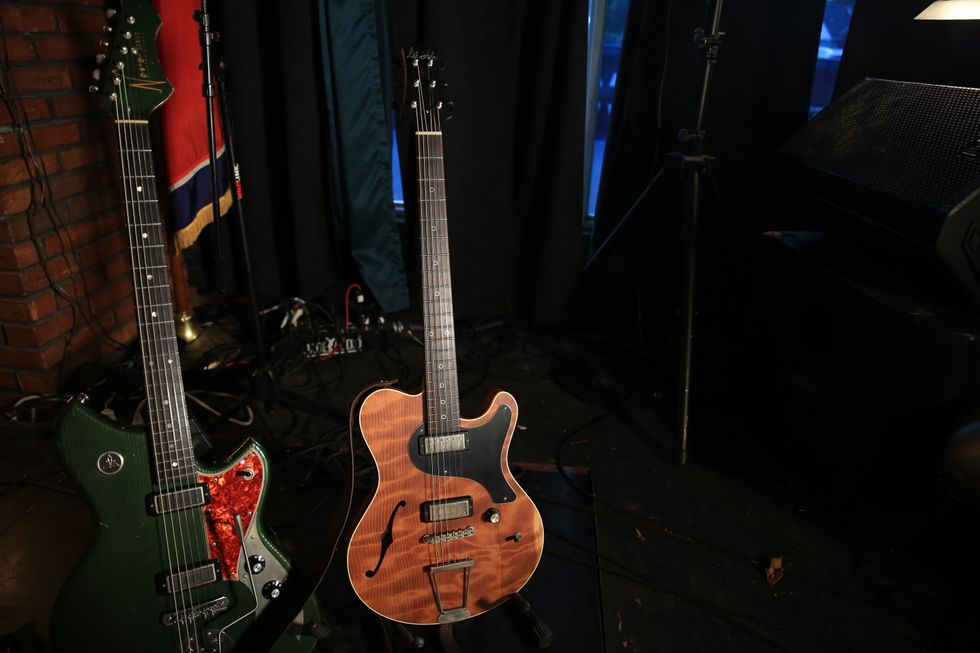
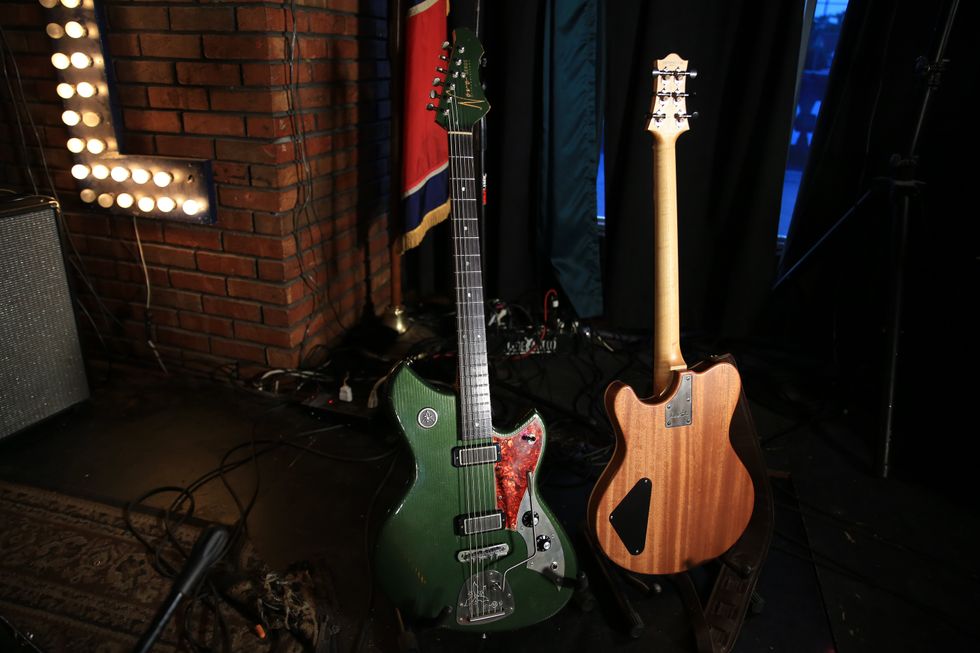
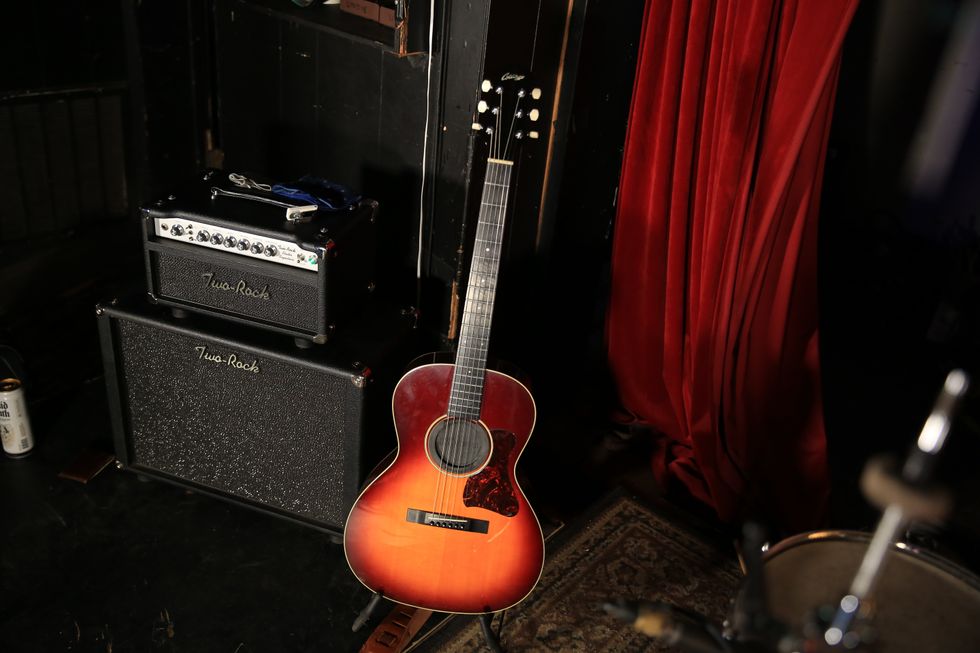
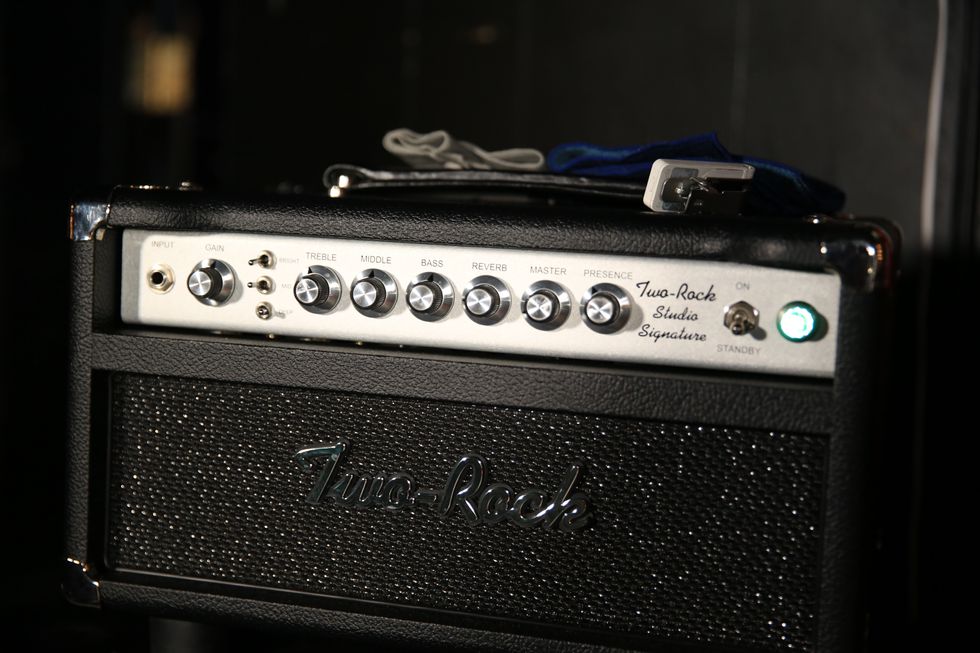
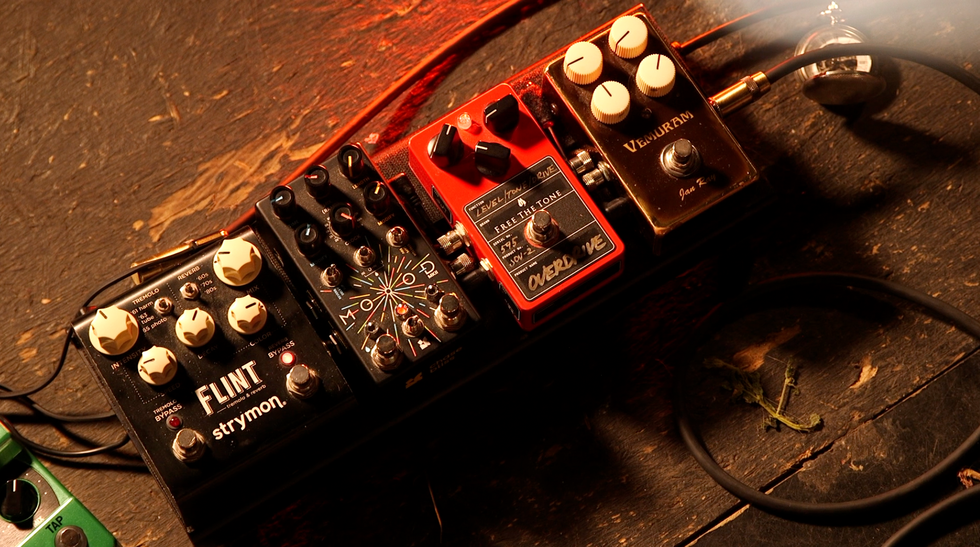
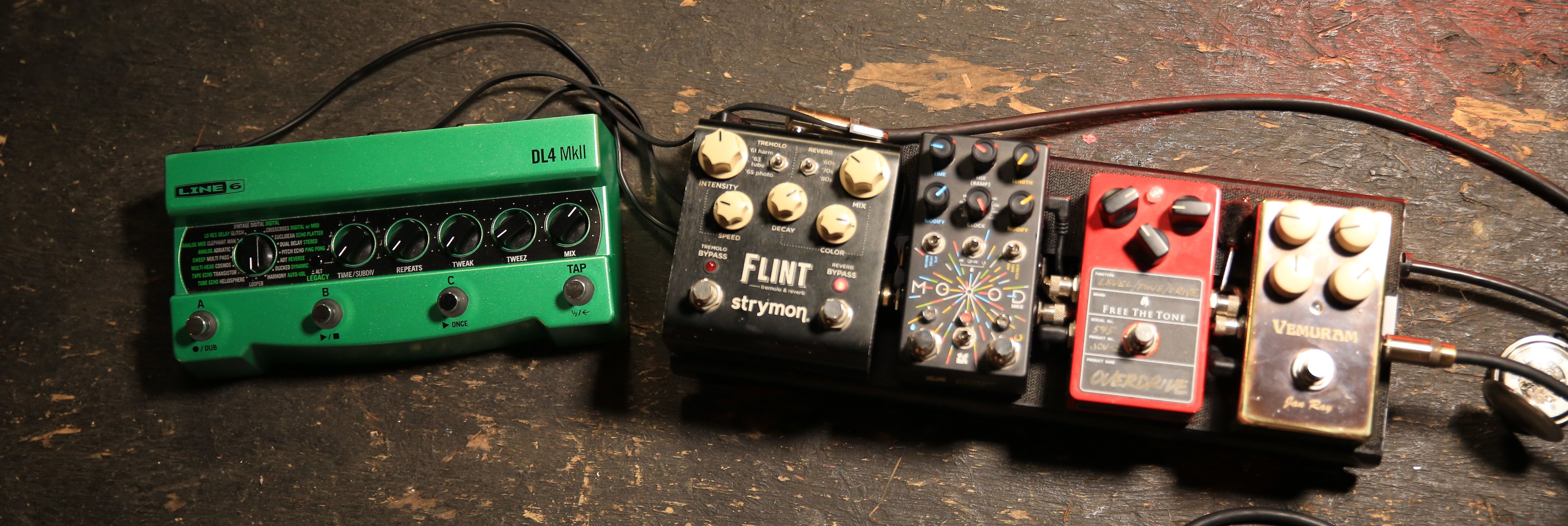 Miller’s Collings runs into a Grace Design ALiX preamp, which helps him fine-tune his EQ and level out pickups with varying output when he switches instruments. For reverb, sometimes he’ll tap the
Miller’s Collings runs into a Grace Design ALiX preamp, which helps him fine-tune his EQ and level out pickups with varying output when he switches instruments. For reverb, sometimes he’ll tap the 
